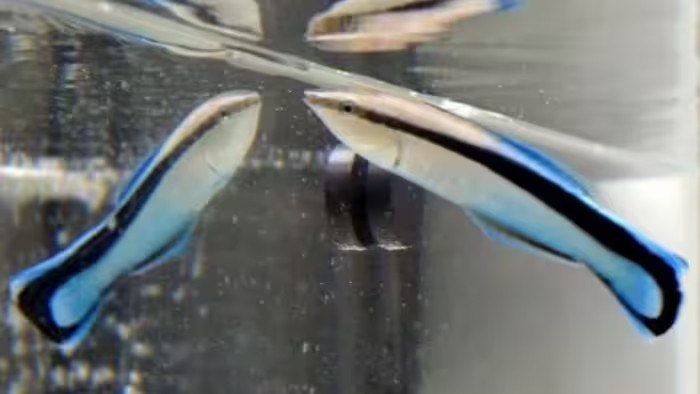Scientists at the University of Ottawa in Canada discover zebrafish larvae use taste buds to sense oxygen levels in water and regulate their breathing.
From University of Ottawa 19/09/24 (first released 12/09/24)

A recent study conducted at the University of Ottawa reveals that some fish use their tastebuds to measure oxygen levels in water.
Specifically, zebrafish larvae (a freshwater fish that belongs to the minnow family) can taste oxygen levels in the water using the same cells they use to taste their food.
Those same cells also function as oxygen sensors, playing a crucial role in regulating the fish’s breathing response to low oxygen conditions.
This dual functionality of taste bud cells was previously unknown and challenges our existing understanding of sensory systems in aquatic animals.
“We’ve uncovered a fascinating connection between taste and breathing in fish,” says Steve Perry, an Emeritus Professor in the department of biology at the University of Ottawa.
“Our research provides the first direct evidence of oxygen-sensing cells linked to the control of breathing in these animals, and surprisingly, these cells are located within their taste buds.”
To arrive at these conclusions, the research team employed innovative techniques, including intracellular calcium imaging in live fish.
“We observed that these sensory cells are activated by low oxygen levels, or hypoxia,” explains co-author Yihang Kevin Pan, a postdoctoral fellow in Professor Perry’s lab.
“When we ablated—or removed—these cells, it disrupted the fish’s breathing patterns under hypoxic conditions.”
“Conversely, activating the nerves emanating from the taste buds stimulated breathing.”

This discovery has far-reaching implications for understanding how fish adapt to changing environmental conditions.
It suggests that the ability to “taste” oxygen levels in the water may be a crucial survival mechanism for aquatic organisms, allowing them to detect and respond to potentially dangerous low-oxygen situations quickly.
The research also highlights the remarkable adaptability of sensory systems in nature.
“It’s a prime example of how the same biological structure can serve multiple functions,” Pan notes.
“In this case, taste buds, in addition to the well-known function of sensing taste cues, also serve a vital respiratory function.”
As we face increasing environmental challenges, including climate change-induced alterations in aquatic ecosystems, understanding how fish perceive and respond to changes in their environment becomes ever more critical.
Beyond scientific understanding, this discovery may have practical implications for protecting and cultivating aquatic life.
The study, titled “Developing zebrafish utilize taste-signaling pathways for oxygen chemoreception”, was published in the journal Current Biology.
More info
You may also be curious about:
-

Personal gritter attachment stops trucks sliding in the snow
-

New nanomaterial could transform how we visualise fingerprints
-

Dams built to prevent coastal flooding can worsen it
-

Building clay walls with novel robotic ‘dropping’ technique
-

Indoor air pollutants could have an impact on creativity
-

Peelable paint you can pull off whenever you like
-

World’s first magnetically controlled prosthetic hand
-

Laughter may be as effective as drops for dry eyes
-

Gel that stops severe bleeding in seconds gets FDA approval
-

Mirror, mirror, in my tank, who’s the biggest fish of all?
-

4WD offroad cart for mobility impaired outdoor fun
-

Chinese team perform robotic operation from Rome on patient in Beijing
